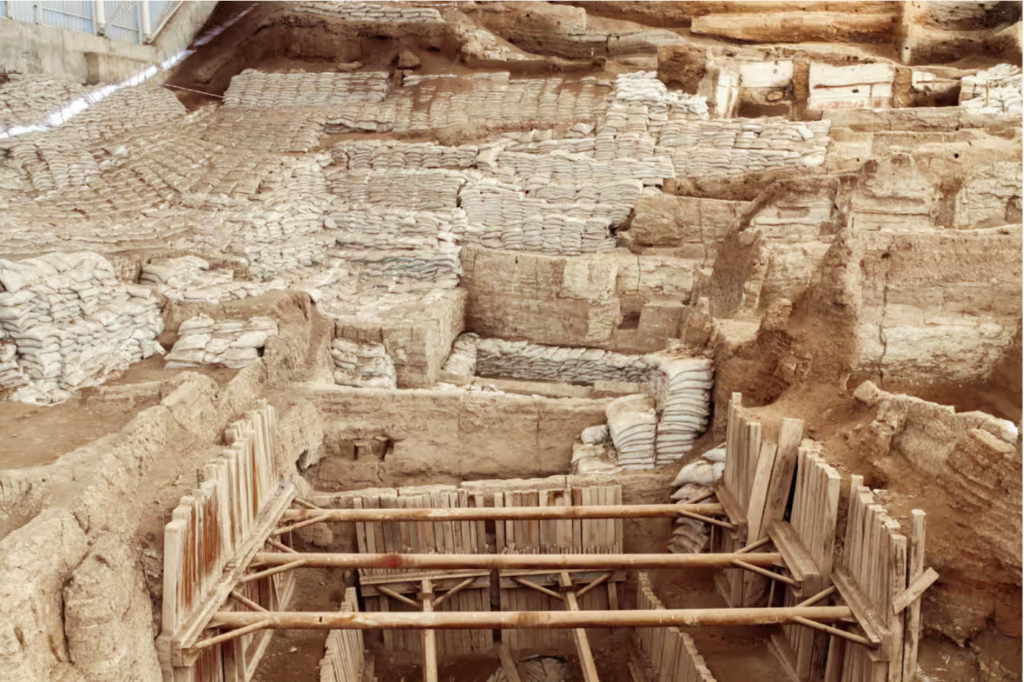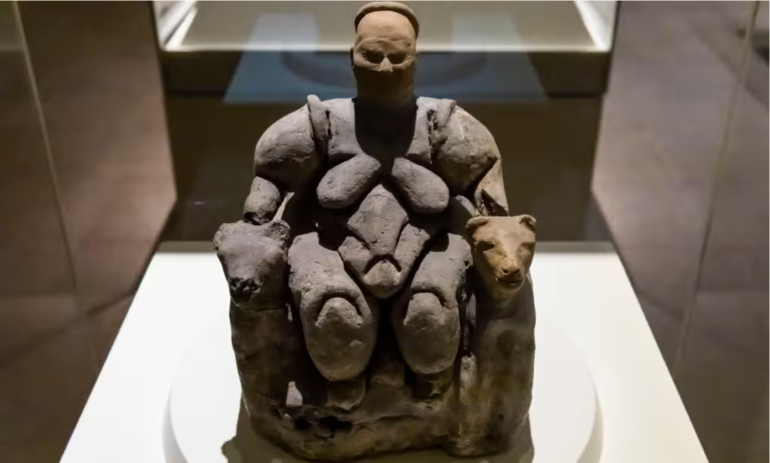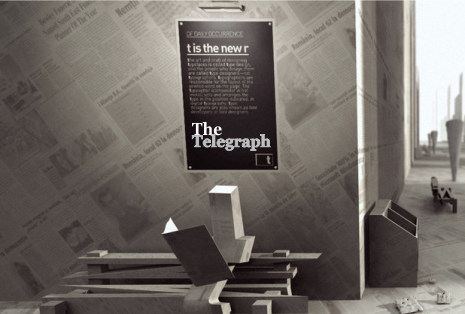A figurine from one of the world’s oldest known human settlements reveals much about the history and potential of female power.
As a writer, my focus has been on one of the biggest mysteries in all of history: what are the origins of patriarchy in human society? I should have known that the journey to answer that question would for ever change the way I thought about myself.
What I did know was that researching it would mean going back in time. The historical timescales involved here aren’t centuries but millennia. That was how I landed in southern Anatolia, Turkey, at the site of one of the oldest known human settlements in the world. Çatalhöyük is beautifully preserved, its box-like homes a window into how people lived in this region thousands of years before Stonehenge was built or the first pyramids went up in Egypt.
A museum nearby holds the most precious artefact found at the site, a figurine not much bigger than my hand, yet so arresting that when it was excavated in the 1960s it sent ripples through the archaeological world. The Seated Woman of Çatalhöyük is about 9,000 years old, depicting what seems to be an older woman. She sits like a queen, her back straight, indented rolls of skin spilling out around her like clay waterfalls, with two big cats – possibly leopards – staring ahead from under her resting hands.
When she was discovered, archaeologists immediately branded her a goddess, a possible symbol of the feminine divine. Since then, experts have wondered whether she may in fact have been a real person, possibly a respected figure in her community or a family matriarch. We can’t be sure, and it’s unlikely we ever will be, since she comes from a time that predates writing. But analysis of human remains can tell us something about the society to which this object belonged. Çatalhöyük was a settlement in which people seem to have had the same kind of lives, irrespective of sex.

The data we have so far tells us that men and women in Çatalhöyük ate similar things, spent about the same amount of time indoors and outdoors, did the same kind of work as each other, and were buried in roughly the same ways. Even the height difference between the sexes was slight – a reminder that biological sex differences can be profoundly affected by our social circumstances. If there were social hierarchies in this Neolithic settlement, they don’t seem to have cut along gender lines.
But, as the figurine suggests, maybe they did cut along lines of age.
Age is a curiously neglected axis of power, even though it’s obvious that most powerful people, both now and throughout history, have been older. Within families, elders have generally held the highest status. In Chinese cultures, filial piety still demands it. Even in the most rigidly patriarchal families, mothers and mothers-in-law can wield a tight grip over younger members.
In the world’s many matrilineal societies, in which inheritance passes from mother to daughter rather than father to son, it’s the oldest woman in a household who has the authority. In India, older women no longer encumbered by young children are today storming into local village politics, known as panchayat. Just this year, an 89-year-old woman was elected the oldest serving panchayat president in the state of Tamil Nadu. But she wasn’t the oldest on record. In 2015, a 93-year-old woman was elected in Maharashtra.
Maybe we ignore age because it’s a democratic way of acquiring power – after all, it happens to all of us who survive. As I slowly slide into midlife I can feel it for myself, that gradual accruing of respect and status that seems to come almost automatically. When a shop assistant first called me ma’am a year or two ago, I was taken aback; now I love it. I know it’s not the same for all women, but I at least feel freer to speak, more confident that I won’t be dismissed, more able to demand what I want. Perhaps the most liberating feeling of all is finding myself less and less subject to the male gaze. It’s my mind that people care about more nowadays. They want to know what I think.
I have spent more than a decade researching and writing about gender. In that time, I’ve come to understand it as far less static than we imagine. What gender means for a person doesn’t even stay the same over the course of their lives. For young children, gender doesn’t particularly matter at all. If it has significance, it’s what we impose through the stereotypes we inject into them. Gender does come to matter later, in adolescence and early adulthood. But then in old age, as fertility wanes and our bodies morph, it shifts meaning once more.
The older you get, the harder it becomes to maintain the stereotypical appearance of femininity (or masculinity). I need lipstick now, where I found I didn’t need it before. It takes conscious effort to keep my hair soft, shiny, the same colour it used to be, and to keep my skin from sagging. I can feel my youth slipping away, and with it also the features that make me recognisably female. For the first time, I wonder how easy it would be to distinguish older men from older women if people didn’t put in all this work.
This can feel destabilising. But seen another way, it’s also liberating. Wouldn’t we all appreciate not having to bear the weight of what society expects of us? So, despite the message I get from the firms trying to sell me anti-ageing cream that I risk losing what makes me most valuable – my youthful femininity – I find myself unexpectedly thrilled to be entering this next stage of my life. The older I get, the less relevant my gender feels. I finally have licence to just be myself, the way I did as a child.
In these moments I experience what I like to imagine the Seated Woman of Çatalhöyük might have thousands of years ago, perhaps knowing her body was of less consequence than the authority she had because of her age. I glance in envy at the many brilliant older women I know, the ones who couldn’t care less about what people think, who head up university departments, edit newspapers, chair boards. I can’t wait to join them. Why should any of us be scared by rolls of skin and cavernous wrinkles when we could have something far better than youth – when we could have power?
- Angela Saini is a science journalist and the author of Superior: The Return of Race Science
- Do you have an opinion on the issues raised in this article? If you would like to submit a response of up to 300 words by email to be considered for publication in our contributors’ section, please click here.

